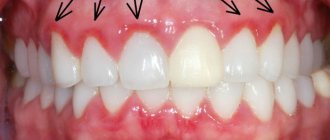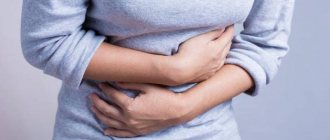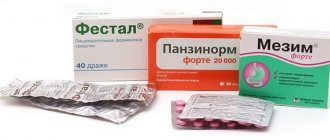Feces (stool, feces) are the most important indicator of the functioning of the gastrointestinal tract. This is a formed mass consisting of undigested food residues and waste products of the human body. By the color of stool, its consistency, and smell, you can judge how properly the stomach and intestines, as well as other organs of the digestive system, are functioning. The anatomy of the intestine (including its distal parts) is the same in women and men, but the reasons that contribute to changes in stool may be different.
Blood in the stool of an adult man
One of the most dangerous symptoms that occurs in people of any age and gender is bloody stool. This phenomenon is quite rare and always indicates diseases of the digestive tract or pathologies of other organs related to the functioning of the intestines. If blood in the stool is found in an adult man, the cause may be not only intestinal diseases, but also disturbances in the functioning of the reproductive organs, so this sign requires consultation with a proctologist and specialized specialists - a urologist, andrologist or nephrologist.
Causes of bloody stool
Bloody feces
is a symptom of a number of diseases of the intestines and lower gastrointestinal tract of an oncological, inflammatory or infectious nature. Experts divide the triggering factors that cause bleeding into several groups:
| Group of reasons | What are they? |
| Neoplasms of a malignant nature | Most often, they are represented by colorectal cancer, even in the initial stages of which small amounts of blood may appear. If the tumor is not treated and it disintegrates, serious blood loss is possible due to the melting of large blood vessels. |
| Pathological conditions characterized by proliferation of the colon mucosa | Abnormal growths include polyps, which are one of the most common causes of blood in the stool. This especially applies to the villous type of polyps, since they are rich in blood vessels. |
| Chronic diseases of the intestines and anus |
|
| Infections and poisoning |
|
| Congenital and acquired disruptions in local circulation | Circulatory deficiency or disturbances in the pelvic and abdominal areas, leading to the development of angiodysplasia or intestinal ischemia. |
| Complications of various diseases |
|
Causes in children
- In a child, the appearance of streaks of blood and mucus in the stool is usually associated with stool disorders - constipation, diarrhea, which can accompany various diseases, including dysbacteriosis and food allergies.
- If the stool takes on the appearance of raspberry jelly against the background of the child’s expressed anxiety and cramping abdominal pain, intussusception of intestinal loops can be suspected - a very serious condition that requires urgent surgical intervention.
The appearance of black stool and even red inclusions does not always indicate bleeding. Sometimes this is associated with the use of certain foods and medications:
- semi-digested remains of eaten berries (blueberries, currants), tomatoes may look like blood clots;
- when eating red beet dishes, the stool may turn crimson;
- food colorings included in various desserts and drinks can change the color of stool;
- the use of activated carbon and iron supplements leads to the appearance of black stools.
However, it is better to be overly vigilant than to miss a terrible signal. Each person needs to periodically examine their stool and, if suspicious impurities are detected, consult a doctor who will promptly prescribe the necessary tests and make a diagnosis.
If you discover a dangerous symptom, you should contact a proctologist. The specialist will examine the rectum using a sigmoidoscope.
Other examinations will also be required:
- colonoscopy (examination of the intestines);
- blood analysis;
- coprogram (hidden blood test);
- gastroscopy, ultrasound (if pathologies of internal organs are assumed);
- fecal analysis.
The study of occult blood makes it possible to recognize existing iron compounds. Before the procedure, you will need a diet low in iron-containing foods, this is necessary for an accurate analysis. The study is used when a person has intestinal diseases and stool disorders of unknown origin.
An incorrect positive test can occur if the patient ate meat, buckwheat, fish, milk the day before the test. In this regard, for the correct result, before the procedure the patient is given a list of prohibited products.
Having determined the diagnosis that is causing blood in the stool, the specialist will prescribe the necessary treatment, which is selected individually in each case.
Treatment involves the following steps:
- Anal fissure and hemorrhoids are usually cured with medications. Suppositories are prescribed that have an analgesic, hemostatic effect, as well as suppositories that strengthen blood vessels. Ointments and medications for constipation (Fitomucil, Duphalac) are prescribed. You should practice personal hygiene and do enemas with herbal plants, they will relieve the inflammatory process.
- Intestinal infections require the use of antibiotics, prebiotics, and probiotics, since the infection is associated with dysbacteriosis. You need to be careful of dehydration. In extremely severe situations, hospitalization will be required.
- Treatment for colon cancer takes a long time. In addition to radiation and chemotherapy, surgery becomes the main method of treatment. The neoplasm is eliminated along with the affected tissues and lymph nodes.
- Treatment of Crohn's pathology is carried out using a conservative method. Surgery may be necessary if complications occur (internal hemorrhages, intestinal obstruction). If the disease worsens, antibiotics are used, and corticosteroid medications are prescribed to eliminate pain.
- The patient’s well-being during ulcerative colitis is very difficult, and therapy is long and difficult. Often drug treatment is unsuccessful, then surgery is used. Strong medications and a strict diet are prescribed.
- Polyposis. Polyps occur as precancerous lesions that need to be removed. The polyp is then sent for histological examination. When no cancer cells are present, no further therapy is required. The main thing is to carry out subsequent examinations to avoid relapse.
Blood in the stool is a dangerous sign and should not be ignored. If such a symptom occurs, you should consult a doctor and conduct examinations to determine the cause. After the diagnosis is established, therapy is carried out by a proctologist, infectious disease specialist or gastroenterologist.
In case of bloody stool in adult patients, a full medical examination is prescribed in order to identify the cause of its appearance. Initial procedures - examination by a proctologist: assessment of the condition of the anus, digital examination of the sphincter and intestinal mucosa. To diagnose the cause, a person is prescribed:
- Blood tests (general and biochemistry). Necessary for identifying signs of inflammation and anemic conditions.
- Coprogram. It is carried out to determine traces of hidden blood and helminth eggs.
- Sigmoidoscopy. Used to identify pathologies in the large intestine.
- Radiology.
- Ultrasound examination of the digestive organs.
- Colonoscopy.
- Gastroscopy. Recommended for suspected inflammatory processes in the upper intestines.
Symptoms of bloody stool
Blood in the stool of an adult
can be detected in minimal, small, medium and large volumes and have a different nature, which is due to the underlying disease.
| Disease | Symptoms |
| Anal fissures | Blood is present in a small volume and has a rich red color. When defecating, the patient experiences severe pain. |
| Hemorrhoids | The symptoms are similar to those described above, but there is no pain. The blood has a rich red color, but dark burgundy clots are also possible. |
| Diverticulitis | The blood may have a rich scarlet color if the sigmoid colon is affected, and very dark if the sections located on the right are affected. In addition to it, pain symptoms in the abdominal area and fever are observed. |
| Polyps | Bleeding is of low intensity and is detected against the background of pain symptoms in the abdominal area, as well as stool disorders. If repeated frequently, they can lead to the development of anemia. |
| Colorectal cancer | The admixture of blood is detected in the form of streaks or clots in the stool and in the initial stages of neoplasm development and has a small volume. However, if the neoplasm has disintegrated, the latter may increase. Other symptoms: pain in the abdomen, stool disorders, anemia and other manifestations of oncology. |
| Proctitis and colitis | Blood and mucus appear in the stool of an adult along with pus. Their admixture is small, but can increase in advanced forms or during exacerbation of chronic diseases. |
Bleeding from bowel cancer
Blood in the stool is one of the symptoms of gastrointestinal cancer. The bleeding rate for rectal tumors is about 90 percent. Most often, the patient observes minor bleeding before and during going to the toilet.
If there are tumors in the rectum, blood in the stool occurs under the influence of the following factors:
- The growth of a neoplasm that is damaged by feces.
- Exposure of a tumor with destruction of the vessels feeding it.
In addition, symptoms of the oncological process begin to manifest themselves earlier if the malignant neoplasm grows inside the intestinal lumen. If a tumor grows into the intestinal wall, symptoms may indicate the development of an oncological process in the final stages, when the patient can no longer be helped.
Bloody, dark-colored discharge from the rectum may be a sign of malignancy.
Bleeding from the rectum is not only a symptom of an oncological process in the body, but also a sign of hemorrhoids. But the symptoms of hemorrhoids are slightly different.
With the latter disease, the patient notices fresh scarlet blood in the stool, which appears after going to the toilet or at the end of a bowel movement. Bleeding that occurs in the presence of a malignant neoplasm in the intestine is manifested by the dark color of the blood. Moreover, blood appears before or during bowel movements. In addition, many patients note purulent and mucous discharge in the stool.
Colon cancer also has other symptoms that do not occur with hemorrhoids. The most common symptoms associated with intestinal cancer are unreasonable weight loss, severe weakness, drowsiness, poor health, and low-grade fever. But in order to make an accurate diagnosis, it is necessary to conduct special diagnostic studies.
Diagnosis of blood in stool
The presence of a problem is determined by the attending physician, based on the patient’s complaints, medical history, and the results of:
- rectal examination;
- general blood test;
- stool occult blood test
; - colonoscopy or rectoscopy.
In order to determine the underlying disease, the appearance of which is blood in the stool, instrumental diagnostic methods are used:
- CT scan;
- Radiography with and without contrast;
- Angiography;
- Biopsy.
Diagnostics
To determine the causes of bloody stools, various diagnostic methods are used. At the initial stage, the proctologist examines the condition of the anus, conducts a rectal examination of the sphincter and mucous membrane.
What methods are used in diagnosis:
- general, biochemical blood test - allows you to see the presence of an inflammatory process, signs of anemia;
- coprogram - carried out to identify worm eggs and hidden blood;
- sigmoidoscopy - allows you to recognize problems in the large intestine;
- X-ray, ultrasound of the digestive system;
- colonoscopy;
- gastroscopy - done if there is a suspicion of diseases of the upper gastrointestinal tract.
Sigmoidoscopy helps to determine the condition of the intestines
The most reliable test for detecting even a minimal amount of hidden blood is the Gregersen reaction; 72 hours before the procedure you should not eat protein foods or brush your teeth. The collected material is treated with special reagents; if it turns blue or green, the result is considered positive.
- Digital examination of the rectum. Already at the stage of preliminary examination of the perineum and anus, anal fissure and hemorrhoids can be diagnosed. Digital examination allows you to evaluate the mobility of the rectal wall and the condition of the lymph nodes.
- Anoscopy and sigmoidoscopy. Allows visual examination of the rectum and distal sigmoid colon. Using these methods, the presence of neoplasms of the mucous membrane, erosions, ulcers, cracks, and signs of inflammation is determined. These methods also allow tissue biopsy followed by coagulation of the bleeding area.
- Colonoscopy. The most informative method that allows you to examine the large intestine along its entire length. Thanks to its high resolution, colonoscopy can detect pathological changes in the intestines at the earliest stages, perform multiple tissue biopsies, remove polyps, and coagulate a bleeding vessel.
- Irrigoscopy. X-ray method for examining the large intestine. Using this method, it is impossible to determine the source of bleeding, but it allows one to obtain information about the underlying disease (diverticula, neoplasms) that likely caused the bleeding.
Blood in stool: treatment
Treatment
such a symptom as
feces with blood
is carried out individually, taking into account the underlying pathology and the amount of bleeding. If it is not significant, the doctor may prescribe a special diet that eliminates stool disorders and makes bowel movements easier. However, if blood appears systematically, anemia will need to be treated.
In any case, the underlying pathology is treated. However, if blood loss is significant, surgery and measures to restore the lost blood volume may be required. Also, endoscopic techniques using laser, coagulation, and the application of hemostatic agents give good results.
Prevention
Prevention of gastrointestinal and other diseases includes the following measures:
- Quitting bad habits: smoking, taking alcohol and drugs;
- Proper nutrition. The number of meals should be 4-6 times a day in small portions. It is better not to eat 3-4 hours before bedtime, so as not to overload your stomach at night. It is better not to abuse fast food, canned food, baked goods, fatty, salty, smoked and spicy dishes. Do not buy products from dubious kiosks or eateries; check the expiration date.
- Correct drinking regimen. Natural juices, compotes, fruit drinks, weak or herbal tea have a beneficial effect on the entire body. In this case, the amount of clean drinking water should be at least 2 liters per day.
- It is very important to conduct a full examination of the body and take tests at least once every six months. This is especially true for people who have a hereditary predisposition to certain diseases.
- Physical activity is very important for general tone and health, especially for people with sedentary work. You don’t need a lot of free time or money for this: just exercise daily at home or run for 30-40 minutes.
- Signs and symptoms of the body cannot be ignored. Sometimes some signs (sharp pain in the side, dry mouth, drops of blood in the stool) go unnoticed. The body never does anything for nothing; everything has a root cause. It’s better to play it safe and see a doctor than to let the situation get worse.
- Avoid stress and nervous tension. As you know, it is the nerves that are the culprits of all diseases. Try to protect yourself from stressors and people who make you worry about trifles.
- Take care of your environment at home and at work. Ventilate the room, if necessary, use humidifiers and air purifiers, make sure there is no dust or animal hair in the apartment.
- Don't get too cold. Dress according to the weather, do not stay in a draft for a long time, outside in the cold, under air conditioning. Every acute respiratory infection is a blow to the immune system.
The appearance of blood in the stool can be either a completely harmless sign or a dangerous symptom. Often, small bloody impurities in the stool go unnoticed, but the consequences are dire.
This is a symptom of several dozen or even hundreds of diseases, so you need to go to the doctor to at least make sure that the most dangerous ones are absent.
There is no need to be embarrassed or afraid to contact a doctor with such a sensitive question, because no amount of money can buy health.
source
Prevention and prognosis of blood in stool
Preventive measures include timely diagnosis and adequate treatment of pathological conditions that cause symptoms such as blood in the stool. As for the prognosis, it is determined by the volume and intensity of blood loss. Often, bleeding stops on its own and no longer manifests itself, without causing serious negative changes in the patient’s condition.
The Doctor Nearby network of clinics invites you to find out the cause of rectal bleeding and undergo a course of treatment for the underlying disease in Moscow. Our clinics are located in different areas of the capital and are equipped with the latest technology. They have a powerful diagnostic base that allows them to accurately and quickly determine the cause of the anomaly and determine ways to eliminate it.
We employ proctologists with many years of practical experience. They are familiar with the symptom of blood in the stool and know how to treat the pathological conditions that cause it. After diagnostic measures, they will develop optimal treatment tactics, which will certainly achieve the desired effect: eliminate the disease and improve the patient’s quality of life.
You can make an appointment with our specialists by filling out and sending us the online form presented on the website, or by contacting our operators!
Treatment methods
Only a doctor can prescribe the correct treatment for the pathology depending on the cause of blood in the stool
Blood in the stool is a symptom, not an independent disease. As a rule, the underlying cause of bleeding is treated. Treatment for blood in the stool depends on the diagnosis:
- Candles and ointments. They are relevant when a hemorrhoidal lump or anal fissure bleeds. Suppositories are inserted up to 4 times a day and after each bowel movement. They allow you to heal damaged tissue, relieve inflammation, stop bleeding, restore vascular tone and reduce swelling.
- Diet. Any intestinal diseases, especially those associated with bleeding, are accompanied by diet. Without following nutritional rules, treatment will not be effective. It is necessary to exclude from the diet all irritating foods, spices, hot sauces, carbonated drinks, alcohol, chocolate, cream cakes, fast food. The diet should be gentle and prevent constipation.
- Antihelminthic drugs. They are prescribed if stool analysis shows the presence of worm eggs in it. The drugs are taken in courses, after which the analysis must be repeated. It is worth remembering that anthelmintic drugs can cause painful abdominal cramps and diarrhea.
- Laxatives. For hemorrhoids, anal fissure, chronic constipation, and diverticulitis, mild laxatives are prescribed. It is preferable to use those products that do not irritate the intestines (based on fiber and lactulose). They gently cleanse the intestines without causing painful spasms and are suitable for long-term use. Taking strong laxatives should be a one-time use; they are addictive and can only increase bleeding.
- Enemas. Enemas can be cleansing or therapeutic (with herbal decoctions). They help to quickly get rid of long-term constipation, as well as relieve inflammation (for anal fissure and internal hemorrhoids, enemas with chamomile decoction are recommended). However, you should not get carried away with them; they wash away the beneficial intestinal microflora and lead to lazy gut syndrome.












